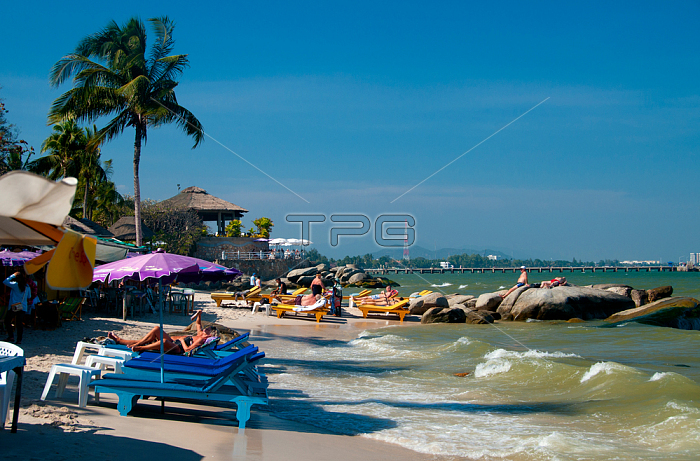
In 1868 King Mongkut began a tradition of royal association with Hua Hin - at the time a tiny fishing village - when he travelled there to observe a total eclipse of the sun. In 1910 Prince Chula Chakrabongse; a brother of King Rama VI; visited Hua Hin on a hunting trip; and was so delighted with the location that he built a holiday villa there. In the early 1920s he was followed by King Vajiravudh (Rama VI) himself; who ordered the construction of a teakwood palace called 'Deer Park'. Finally; in the late 1920s; King Prajadhipok (Rama VII) set the final royal seal of approval on the place; when he built a palace called Klai Kangwon; or 'Far from Worries'; where he could escape from the travails of life in the capital.
In addition to the royal connection; Hua Hin was moulded by the arrival of the southern railway line in 1922. Prince Purachatra; then Director General of Siamese State Railways; ordered the construction of the splendid Hua Hin Railway Hotel; an elegant colonial-style structure with high ceilings; slowly-moving fans and sweeping teak stairways. Today this establishment; rejoicing in the less-than-alluring name of Sofitel Central Hua Hin; retains a place amongst the best hotels in town. The Hua Hin Railway Hotel was used as a substitute for Phnom Penh's Hotel Le Phnom in the film 'The Killing Fields'.
| px | px | dpi | = | cm | x | cm | = | MB |
Details
Creative#:
TOP20147381
Source:
達志影像
Authorization Type:
RM
Release Information:
須由TPG 完整授權
Model Release:
No
Property Release:
No
Right to Privacy:
No
Same folder images:

 Loading
Loading